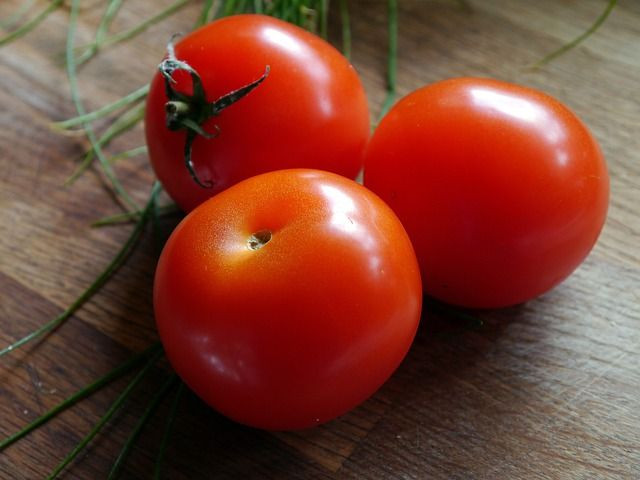4 Food Guide Tips To Lower The Risk Of Cancer Through Diet

The word “cancer” can’t help but invoke a sense of dread and fragility. Although heart disease still remains the number one killer in the country overall, up until 2014 cancer overtook it in 22 states. Last year, there were 1.6 million new cases of cancer and it killed over 500,000 Americans.
In light of the statistics, it’s understandable that you might want to do as much as possible to protect yourself from cancer. That’s why expert Dr. David Khayat, a French oncologist and the former head of the National Cancer Institute in France, released a book last year addressing the most recent research on how our diets can influence cancer risk, pithily titled The Anticancer Diet. While the easy-to-read book offers a detailed guide of the anti-cancer foods you should stock in your kitchen cabinet, it also offers some broader tips and corrects some common misconceptions about cancer risk and food. Let’s take our own brief look at these tips.
1. All Fishes Aren’t Created Equal
Seafood is one of the healthier foods you can regularly eat. It’s chock full of proteins, so-called “good fats” like omega-3 and omega-6, and is lower in calories than other types of meat.
Unfortunately, as Khayat points out, much of the fish we eat carries trace amounts of mercury, lead, and other pollutants known to be carcinogenic. Because of mercury alone, organizations like the American Pregnancy Association recommend pregnant women moderate their intake of certain species of fish that are especially contaminated. While people’s standard level of fish consumption doesn’t appear to be tied to an increased risk of cancer, Khayat uses fish as an illustration that defining foods as uniformly good or bad for you isn’t a smart approach; a point that he repeatedly comes back to throughout the book. Our bodies are complex, cancer is complex, and the foods we eat can provide a complexity of nutritional value for the body.
For those hoping to stay as mercury free as possible, Khayat advises avoiding swordfish, salmon, and tuna and instead eating more bass, sardines, and shrimp.
2. Beef Doesn’t Have To Be The Enemy
As with fish, the widely-held assumption that red meat is automatically unhealthy and a cancer magnet is too simplistic, says Khayat.
For one, while some research has definitively tied red meat consumption to an increased risk of certain types like colon and prostate cancer, the evidence is still somewhat mixed. As Khayat notes, at least some of this confusion may come down how different areas of the world eat their meat: While French beef is leaner and the country’s residents eat it sparingly, American beef is much fattier and heavier on the calories. Americans also tend to overindulge. The way red meat is cooked also changes the cancer risk Americans are more likely to grill or barbecue their meat, which has been shown to increase the level of carcinogens we're exposed to.
But beef doesn’t have to be dangerous to our health. Khayat concludes that so long as we stick to leaner cuts, prepare and cook meat with variety, and eat it in moderation, it can be a part of a balanced diet. Chicken is also a great source of meat and comes with no known cancer risks.
3. The Oily Connection
Khayat also details an unfortunate reality of oil: There’s no strong evidence that any particular type, whether from fish or vegetables, can noticeably lower our risk of cancer.
In some cases, as with the omega family of oils commonly derived from fish, the oils are broken down into unhealthier components before they can have any profound positive effects on the body, which might explain the recent research showing an increased risk of omega-3 fats to prostate cancer. In other cases, people inadvertently turn the cooking oil they’re using into cancer-causing agents by overheating and overprocessing it.
Fats are an important part of our diet and shouldn’t be neglected. And there is still a myriad of health benefits that come from sticking to polyunsaturated fats, from better balanced cholesterol to providing nutrients like vitamin E.
4. Color-coded Fruits And Veggies
Fruits and vegetables remain among the healthiest and most proactive ways to manage our cancer risk, but there are distinct differences in how they work. Luckily, as Khayat points out, many of the cancer-fighting molecules found in these foods can be identified by the color pigments they add. These include red vegetables and fruits like tomatoes, which contain the antioxidant lycopene; the purple phenols and anthocyanins found in grapes and blueberries that can protect us from colon and liver cancer; and another antioxidant called allicin that can be found in white vegetables like garlic and onions.
How we prepare and eat these foods can also influence the health benefits we get from them, too. Garlic, for instance, has to be peeled and crushed before it’s cooked for the allicin to be properly released. Meanwhile, tomatoes that are left uncooked have more lycopene. Chemicals, such as pesticides, can be left behind on unwashed fruits and vegetables which is why a thorough wash and scrub should be performed as the first step.
Not Set In Stone
Overall, Khayat is careful to note that much of our cancer risk is unfortunately out of our hands, thanks to viral infections that we unwittingly come across and hereditary factors that are passed down to us. But our diets may account for 20 percent, if not more, of our cancer risk factors, making it a crucial aspect of preventative cancer care. Tobacco use remains the single largest risk factor we have control over, so Khayat advises that any smoker hoping to balance out their habit with a good diet should think again.
Overall, being active, avoiding obesity, and choosing a varied diet are the key methods of prevention to help us stay healthy and cancer free.



























